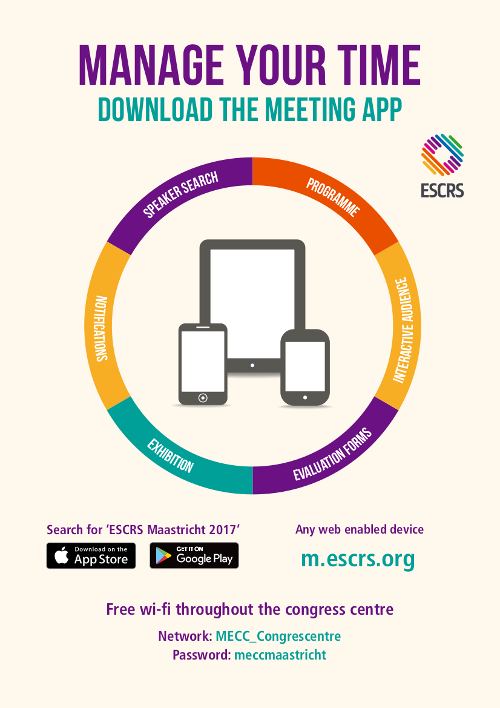Comparison of the outcomes with two protocols for inflammatory control after phacoemulsification surgery: a comparative clinical population-based follow-up study
(results will display both Free Papers & Poster)
Session Details
Session Title: Cataract
Session Date/Time: Saturday 11/02/2017 | 08:30-11:00
Paper Time: 10:18
Venue: Auditorium 1
First Author: B. Johansson SWEDEN
Co Author(s):
Abstract Details
Purpose:
To compare outcomes after phacoemulsification surgery at two centres with similar uptake areas, but with different protocols for controlling postoperative inflammation and preventing cystoid macular edema (CME).
Setting:
Departments of Ophthalmology at Link�ping University Hospital, and at Vrinnevi Hospital of Norrkoping, Region of �sterg�tland, Sweden
Methods:
300 consecutive phacoemulsification procedures from each centre were retrospectively reviewed. Postoperative anti-inflammatory treatment was at centre 1 topical dexamethasone 3 times daily for one week, 2 times daily for 1 week, and 1 time daily for 1 week; at centre 2 topical dexamethasone and topical nepafenac 1%, both 3 times daily for 3 weeks. Information was retrieved from digital patient records: Age at surgery, presumed surgical difficulty, peroperative complications/difficulties, extra postoperative visits, occurrence of CME, iritis, elevated intraocular pressure (IOP), corneal edema and other complications. Chi-square test was used for statistical evaluation.
Results:
Mean age: 74y 4mo at centre 1, 75y 3mo at centre 2. Expected surgical difficulty was similar. Mechanical pupil dilatation was used and hard nucleus were more common at centre 2.
18 patients returned to centre 1 for unplanned postoperative visits, 26 patients at centre 2. Clinically significant CME occurred in 2 (centre 1) and 3 (centre 2) cases (NS, P?0.65). All but 1 case had vitreoretinal or retinal pathology preoperatively. 5 cases of postoperative iridocyclitis occurred at centre 1, 2 cases at centre 2 (NS, P?0.25). IOP was increased in 4 cases at centre 2 (P?0.044).
Conclusions:
In this non-selected population-based retrospectively studied material, postoperative anti-inflammatory treatment and prevention of clinically significant CME appears equally effective with steroids alone compared with steroids in combination with a non-steroidal anti-inflammatory dryg (NSAID). Differences in reported surgical technique (higher frequency of mechanical pupil dilatation) may relate to the higher incidence of postoperative IOP elevation at centre 2, but may also call for caution when interpreting results regarding other inflammatory related postoperative events.
Further studies are warranted to clarify the clinical value of NSAID as treatment for postoperative inflammation and prevention of clinically significant CME in unselected populations.
Financial Disclosure:
receives consulting fees, retainer, or contract payments from a company producing, developing or supplying the product or procedure presented, research is funded, fully or partially, by a competing company, receives consulting fees, retainer, or contract payments from a competing company



